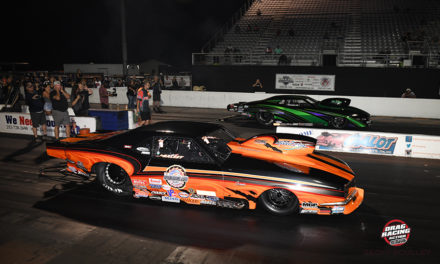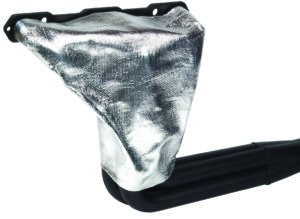
TENSION
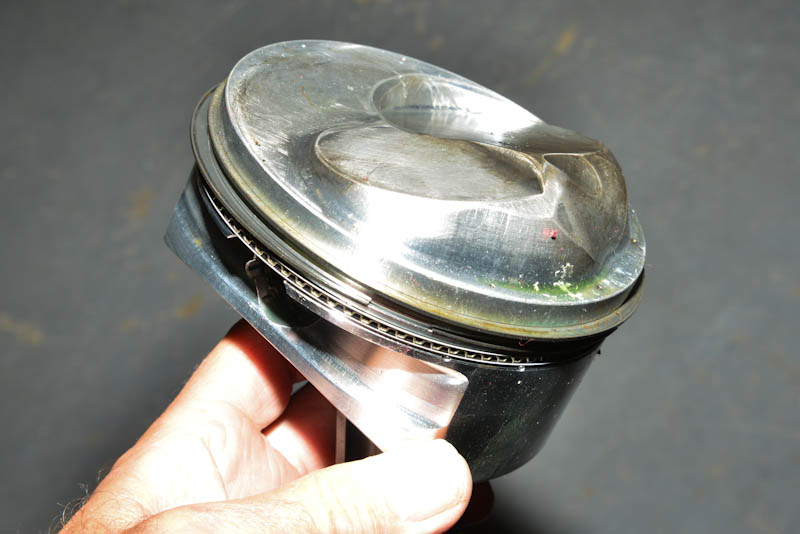
Oil Ring Tension Can Be A Cause Of Concern
Words/Photos John DiBartolomeo
In the case of piston ring, an oil ring; or scraper; is what is used to wipe excess oil from the cylinder wall. Oil has a lower octane value than fuel, which sort of makes a lot of sense when it comes to any oil finding its way into the combustion chamber. It makes even more sense when you’re really on the edge, tune-up wise, it can be the difference between making a real good pass or ending up with a hole in your piston.
A typical oil ring will have three components; two thin rails and an expander to provide tension against the thin rails. In this case, the expander can be thought of as a spring, which is really what it is; a spring in the same manner as any other type of spring; one which can lose tension over time.
Most of us have all heard of the term nitriding as it’s a form of heat treating which allows for a harder surface and longer life for a variety of products. The process is popularly used on crankshafts, camshafts and other components which tend to see a lot of abuse and wear.
“In the case of springs, be it valve springs or any other spring, all springs lose tension over time,” says Lake Speed Jr. of Total Seal Piston Rings. “The harder a spring is used, the more abuse they take, not to mention the amount of heat cycling it must endure, all adds up to it losing tension.”
Lake Speed Jr. of Total Seal Piston Rings. “The harder a spring is used, the more abuse they take, not to mention the amount of heat cycling it must endure, all adds up to it losing tension.”
It’s common knowledge the higher the oil ring tension, the more friction losses it imparts. In an effort to eliminate some of that loss, engine builders; as well as the OEMs; have gone on to the use of low-tension oil rings. The concern comes into play where the oil ring expander loses tension over time.
“Where we started seeing more of the problem was in the Pro Mod ranks,” added Speed, “where they required as much oil ring tension as possible. Whereas those engines typically used a 3/16” oil ring, the same concerns come into play with thinner oil rings as well, regardless of class. It doesn’t matter what thickness oil ring; the oil ring expander will lose tension over time. In fact, in the case of a drag race engine, the expander will generally lose a certain amount of tension in the first 20 runs or so.”
 Lest you think this is only a concern in the higher ranks of our sport, most sharp engine builders we spoke with admitted to their own method of measuring oil ring tension. It’s adhering to even the smallest of components which leads to not only a powerful but consistent engine. For that reason, oil rings are available from Total Seal Piston Rings in a wide variety of tension, but in all cases, that tension will decrease in due time.
Lest you think this is only a concern in the higher ranks of our sport, most sharp engine builders we spoke with admitted to their own method of measuring oil ring tension. It’s adhering to even the smallest of components which leads to not only a powerful but consistent engine. For that reason, oil rings are available from Total Seal Piston Rings in a wide variety of tension, but in all cases, that tension will decrease in due time.
“It was several years ago when we began to think there had to be a better way,” Speed says. “Because often, race engines are run on the ragged edge, where there is so much heat, vibration and stress placed on all the components. We then began to realize that oil ring tension was decreasing over time and as such, we knew we needed to find that better way. When that happens, the ring isn’t capable of wiping the correct amount of oil from the cylinder wall, and therefore some of that oil can find its way into the combustion chamber.
“In most cases,” Speed adds, “we learned that engine builders were using oil ring tensions high enough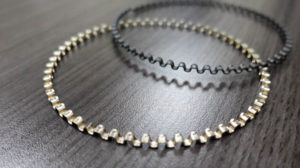 that if they lost a little bit, it wasn’t a big deal. However, when you’re looking to maximize power and maintain either very high or low oil ring tension, every little bit you can do helps. It’s here we learned the advantages of gas nitriding.”
that if they lost a little bit, it wasn’t a big deal. However, when you’re looking to maximize power and maintain either very high or low oil ring tension, every little bit you can do helps. It’s here we learned the advantages of gas nitriding.”
There are several methods of nitriding with the most popular in our sport being gas nitriding. It’s here where a nitrogen-rich gas is diffused over a heated object creating a nitride layer. In this case, the nitride heat treating process transforms the metallurgy of the expander. The nitride hardening process integrates onto the surface of the expander to form the nitride layer. This allows the portion of metal below the surface layer to maintain a level of malleability that prevents cracking under extreme conditions, along with extending its life.
“The solution may have been to change the material of the oil ring expander but that’s not effective from a number of standpoints,” he said. “The answer was gas nitriding an existing expander. In that method, that process increased the strength and longevity of the product without the additional costs involved with a change in the actual material.
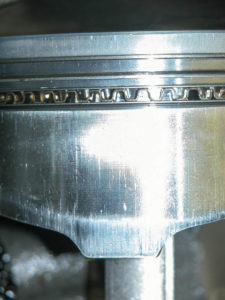 “What it comes down to is the longevity of the entire ring package,” says Speed. “How do we allow this engine to make this amount of power and make it live for a longer period of time? That’s one of the keys to racing. If the engine is making power for only the first couple of runs and falls off after that, that does no one any good. Piston ring and cylinder seal is forefront in that regard. The use of tool steel piston rings is a part of that thinking and the same goes for our new Ndurance Performance Oil Rings.”
“What it comes down to is the longevity of the entire ring package,” says Speed. “How do we allow this engine to make this amount of power and make it live for a longer period of time? That’s one of the keys to racing. If the engine is making power for only the first couple of runs and falls off after that, that does no one any good. Piston ring and cylinder seal is forefront in that regard. The use of tool steel piston rings is a part of that thinking and the same goes for our new Ndurance Performance Oil Rings.”
Like anything else in racing, performance; be it the fastest or the most consistency; requires carefully looking at all facets of your program, from the largest components right down to something which may seem minor, that being piston rings. However, the “minor” things can add up to making big differences.
SOURCE
Total Seal Piston Rings
623-587-7400
www.totalseal.com


